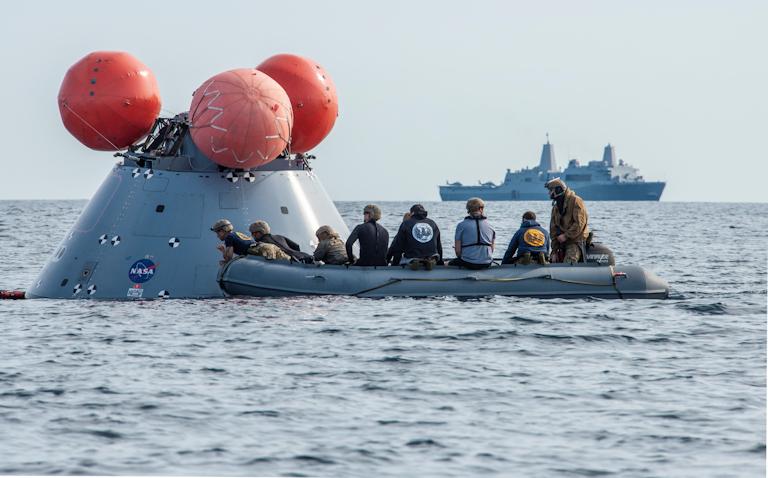News

Artemis I is Done, What’s Next for NASA’s Return to the Lunar Surface?
The Artemis I mission ended successfully on December 11, 2022, nearly a month after NASA’s SLS rocket blasted the Orion capsule on a trajectory that took it beyond the Moon and back to prepare for future manned missions to the lunar surface. With the success of the mission, NASA is poised to continue funding the Artemis Program, with the ultimate goal of returning humans to the Moon for the first time since the early 1970s. As the vast quantities of data from the Artemis I mission are parsed and analyzed, what will engineers and scientists be doing to prepare for Artemis II and beyond?

The Orion Crew Capsule is recovered in the Pacific Ocean after the success of the Artemis I mission. Credit: NASA
NASA is coordinating with international partners and domestic private companies to achieve the goals of the Artemis Program, with the primary focus on returning humans to the lunar surface for long-term exploration, or even habitation. Despite having returned the last crew from the Moon in December 1972, NASA has continued to explore the lunar surface with orbiters and landers. Following the Columbia Space Shuttle tragedy in 2003, NASA sought a new direction for its manned space activities, ultimately settling on returning to the Moon as a stepping stone for crewed missions to Mars.
Following Artemis I, which was uncrewed, Artemis II will send astronauts back to orbit the Moon and perform system checkouts in 2024. Artemis III, currently scheduled for 2025, will land astronauts on the lunar surface to begin exploration. As the Artemis Program continues, there are plans to establish a long-term habitation facility at the lunar south pole, a region that may be rich in minerals, water, and other material that could greatly aid in sending humans to Mars.
Using the information acquired during the Artemis I mission, scientists and engineers will work over the coming months and years to finalize the plans for the future missions. However, as NASA does that, the space agency will be relying on its partners to develop the key technologies that will make the missions successful. The need for advanced engineering concepts is nothing new to NASA, but partnering with outside organizations at the level anticipated for the Artemis Program is quite new.
One of the key players in the development of these new technologies is Motiv Space Systems. Having demonstrated advanced robotic and mechanical systems for the Perseverance Mars mission, Motiv continues to work closely with NASA to provide the types of systems that will make locomotion on the Moon feasible.
Motiv’s work to create robotic and mechanical systems that can operate on the lunar surface without bulky heaters and electronics will greatly aid astronauts in establishing a long-term research facility as a part of the Artemis Program. Using technology demonstrations related to on-orbit spacecraft servicing, Motiv is creating systems to manufacture and repair spacecraft hardware in space using robotic systems.

Artist concept for the OSAM-2 mission, for which Motiv is providing on-orbit robotic manufacturing. Credit: Redwire
As NASA moves past the success of the Artemis I mission and prepares for the subsequent Artemis missions, the space agency is relying on commercial partners, like Motiv Space Systems, to provide the engineering technology that will be crucial for program success. Motiv is proud to be working closely with NASA to develop the advanced robotic and mechanical systems that will enable the future of space exploration.